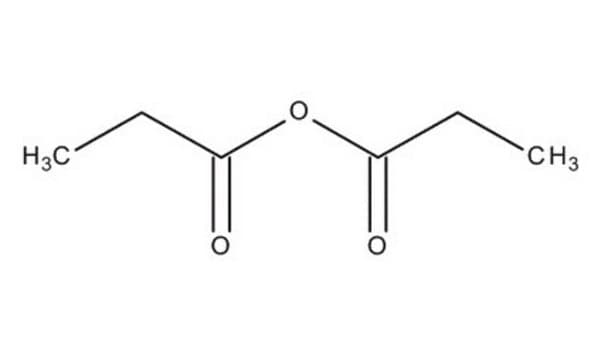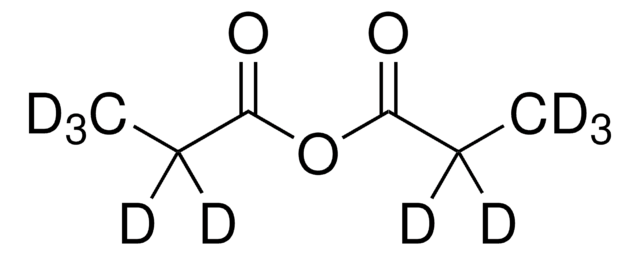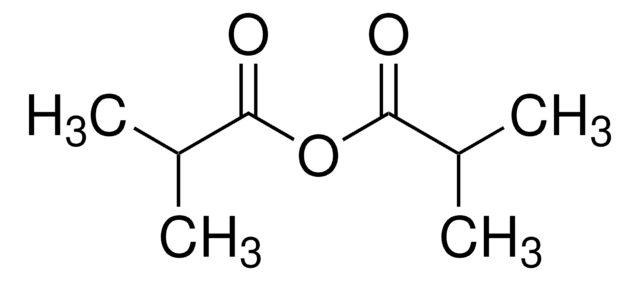240311
Propionic anhydride
≥99%
Synonym(s):
Propanoic anhydride
About This Item
Recommended Products
vapor density
4.5 (vs air)
Quality Level
vapor pressure
10 mmHg ( 57.7 °C)
Assay
≥99%
form
liquid
autoignition temp.
545 °F
expl. lim.
11.9 %
refractive index
n20/D 1.404 (lit.)
bp
167 °C (lit.)
mp
−43 °C (lit.)
solubility
chloroform: soluble(lit.)
diethyl ether: soluble(lit.)
ethanol: soluble(lit.)
methanol: soluble(lit.)
density
1.015 g/mL at 25 °C (lit.)
functional group
anhydride
ester
SMILES string
CCC(=O)OC(=O)CC
InChI
1S/C6H10O3/c1-3-5(7)9-6(8)4-2/h3-4H2,1-2H3
InChI key
WYVAMUWZEOHJOQ-UHFFFAOYSA-N
Looking for similar products? Visit Product Comparison Guide
Related Categories
Application
Signal Word
Danger
Hazard Statements
Precautionary Statements
Hazard Classifications
Eye Dam. 1 - Skin Corr. 1B
Storage Class Code
8A - Combustible corrosive hazardous materials
WGK
WGK 1
Flash Point(F)
165.2 °F - closed cup
Flash Point(C)
74 °C - closed cup
Personal Protective Equipment
Choose from one of the most recent versions:
Already Own This Product?
Find documentation for the products that you have recently purchased in the Document Library.
Customers Also Viewed
Our team of scientists has experience in all areas of research including Life Science, Material Science, Chemical Synthesis, Chromatography, Analytical and many others.
Contact Technical Service










![(2R)-2-Phenyl-3,4-dihydro-2H-pyrimido[2,1-b][1,3]benzothiazole ≥95%](/deepweb/assets/sigmaaldrich/product/structures/302/833/59a06b8b-9e9d-4dc4-a4ed-a36ab5081792/640/59a06b8b-9e9d-4dc4-a4ed-a36ab5081792.png)
